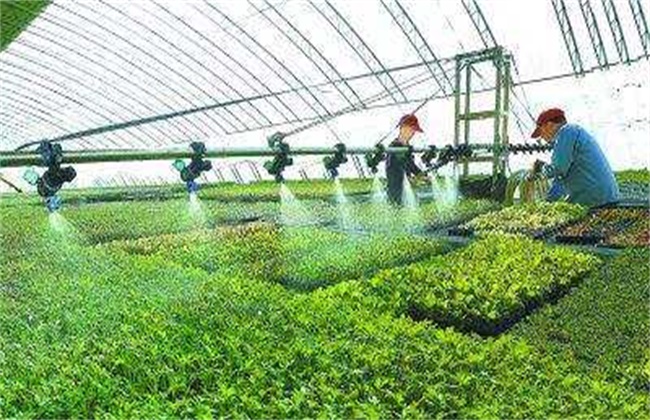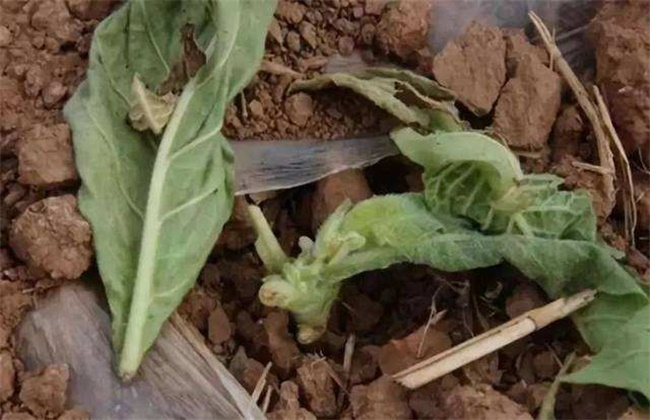Key points of management of coriander at seedling stage
Coriander is a vegetable that many people like and hate very much. The phenomenon of polarization in our country is very serious, but because there are a lot of people who like it. Therefore, there is still a large planting area in our country. When planting coriander, we should adjust it reasonably according to the growth stage of coriander. So how to manage the coriander in the seedling stage? Next, let's take a look at the key points of coriander seedling management with the editor.
1. Soil management
The growth of coriander needs a certain amount of fertilizer, and the demand for soil is relatively large. Especially in the seedling stage, so when we are in the coriander seedling stage, we should pay attention to do a good job of ploughing and weeding. Ensure that the fertilizer and water in the later stage can normally infiltrate into the soil and promote the absorption of coriander. And because the growth cycle of coriander is not long, we should apply sufficient base fertilizer in planting. Farm manure or compound fertilizer is the main method to improve soil fertility. Sufficient soil fertility can meet the growth and nutrition of coriander, so as to enhance the growth ability of coriander seedlings.
2. Rational watering
Although the growth cycle of coriander is relatively short, the germination period of coriander is relatively long. Generally speaking, after sowing, it will take about 10 days to break the ground and emerge seedlings. After the emergence of coriander, drip irrigation should be appropriate to promote the growth of seedlings. If during the sprouting period of parsley, the weather suddenly clears up after the rain, then the soil is easy to form a layer of clumps. This will seriously affect the germination of coriander seeds and its emergence rate. Therefore, if we encounter this situation, we should also pour a small amount of water in time to alleviate the hardening phenomenon. Improve soil permeability and seedling emergence rate.
3. Suitable time vaccine
In the coriander seedling stage, inter-seedling work must be indispensable. Generally speaking, the interseedling work can be carried out when the coriander seedlings grow to about 4 centimeters. In the interseedling, we should take the principle of removing the weak and staying strong, retain the seedlings with strong growth, and remove the weak seedlings, plant diseases and insect pests and so on. The distance between plants is kept at about 3 cm, which provides sufficient space for strong seedlings to grow. When leaving seedlings, we should also pay attention to keep the growth size consistent as far as possible, so as to facilitate the later management of coriander planting. Then in the middle of the seedlings, we also need to weed properly to prevent weeds from grabbing the growth and nutrition of parsley.
4. Pest control
The disease of coriander is generally less, but because the resistance of seedlings is relatively poor. Therefore, we should still pay attention to the prevention and control of diseases, as well as the control of pests such as aphids. The common disease of parsley is leaf spot. Diseases and insect pests will seriously endanger the yield and quality of coriander, so we must pay more attention to it. Diseases can be controlled with carbendazim, chlorothalonil and other agents, while pests can be prevented by spray with methylovir salt or Caixi suspension. Usually spray once a week to prevent it.
The above is a brief introduction to the key points of coriander seedling management. That's all for today's introduction. This article is for reference only. I hope it can help you all.
Related
- Where is it suitable to grow horseradish in China? it is expected to see the middle altitude horseradish in Alishan.
- How to prevent tomato virus disease reasonably? (Control methods included)
- Many people like to plant towel gourd on the balcony. What are the main points of this method and management?
- What crops can chili peppers be mixed with?
- Fertilization techniques and matters needing attention in Tomato
- What are the grafting techniques for peach seedlings in spring?
- Harm and control methods of root swelling disease of Chinese cabbage
- What are the pests of sweet potatoes? How to prevent and cure it?
- Symptoms, causes and Control methods of navel Rot in Tomato
- The cause of "Cucumber rotten bibcock" in Farmers' planting Cucumber and its Control Plan



